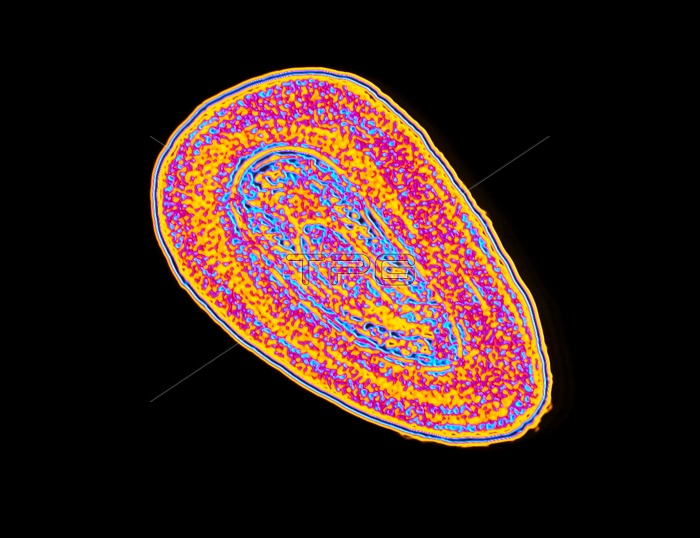
Haemophilus influenzae B. Coloured Transmission Electron Micrograph (TEM) of a single Haemophilus influenzae type B bacterium. In cross-section the outer cell wall of the bacterium is seen, with DNA genetic material (blue) in the core. It is rod- shaped, and a Gram-negative bacillus. Haemophilus influenzae is an important pathogen in children aged 1-5 years old. It colonizes the upper respiratory tract within the first few months of life. It may spread locally to cause respiratory tract diseases like bronchitis and pneumonia. The type B (HIB) serogroup of this bacteria is the most common cause of epiglottitis and paediatric meningitis. Magnification: x20,000 at 6x7cm size.
| px | px | dpi | = | cm | x | cm | = | MB |
Details
Creative#:
TOP10166444
Source:
達志影像
Authorization Type:
RM
Release Information:
須由TPG 完整授權
Model Release:
N/A
Property Release:
N/A
Right to Privacy:
No
Same folder images:

 Loading
Loading